

Zitierweise / cite as:
Payer, Alois <1944 - >: Chronik Thailands = กาลานุกรมสยามประเทศไทย. -- Chronik 1869 (Rama V.). -- Fassung vom 2016-04-13. -- URL: http://www.payer.de/thailandchronik/chronik1869.htm
Erstmals publiziert: 2013-09-10
Überarbeitungen: 2016-04-13 [Ergänzungen] ; 2015-09-13 [Ergänzungen] ; 2015-08-23 [Ergänzungen] ; 2015-04-22 [Ergänzungen] ; 2015-04-02 [Ergänzungen] ; 2014-12-16 [Ergänzungen] ; 2014-12-04 [Ergänzungen] ; 2014-08-12 [Ergänzungen] ; 2014-03-04 [Ergänzungen] ; 2013-10-10 [Ergänzungen] ; 2013-10-06 [Ergänzungen] ; 2013-09-13 [Ergänzungen]
©opyright: Dieser Text steht der Allgemeinheit zur Verfügung. Eine Verwertung in Publikationen, die über übliche Zitate hinausgeht, bedarf der ausdrücklichen Genehmigung des Herausgebers.
Dieser Text ist Teil der Abteilung
Thailand von
Tüpfli's Global Village Library
ช้างตายทั้งตัวเอาใบบัวปิดไม่มิด
|
Gewidmet meiner lieben Frau Margarete Payer die seit unserem ersten Besuch in Thailand 1974 mit mir die Liebe zu den und die Sorge um die Bewohner Thailands teilt. |
|
Bei thailändischen Statistiken muss man mit allen Fehlerquellen rechnen, die in folgendem Werk beschrieben sind:
Die Statistikdiagramme geben also meistens eher qualitative als korrekte quantitative Beziehungen wieder.
|
1869

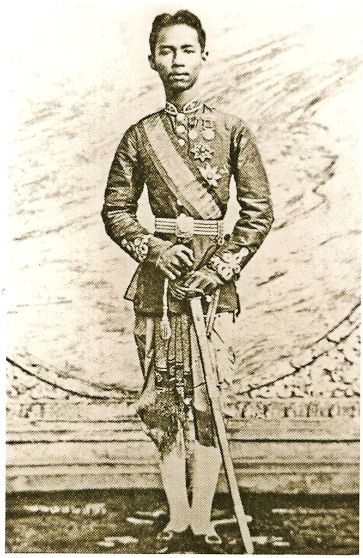
Abb.: Rama V., 1869
1869
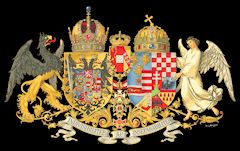
Abb.: Der Konsul Siams in Österreich-Ungarn mit österreichischen Beamten, Wien, 1869
ca 1869
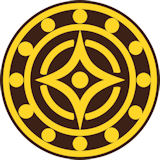
Abb.: Kawilorot (พระเจ้ากาวิโลรสสุริยวงศ์) König von Chiang Mai
[Bildquelle: McGilvary, Daniel <1812 - 1911>: A half century among the Siamese and the Lāo : an autobiography. -- New York [u. a.] : Revell, 1912.]
1869 - 1888
Won Bunnag (เจ้าพระยาสุรวงษ์ไวยวัฒน์ - วร บุนนาค, 1828 - 1888) ist Kalahom (กลาโหม, Kriegsminister). Er ist der führende Unternehmer seiner Zeit und gilt als korrupt.
Abb.: Won Bunnag (เจ้าพระยาสุรวงษ์ไวยวัฒน์ - วร บุนนาค)
[Bildquelle: th.Wikipedia. -- Public domain]
1869
Die britische Indo-Chinese Sugar Company erhält die Genehmigung, in Siam Zuckerrohr anzubauen und zu Zucker zu verarbeiten.
"Commercial development all this time was proceeding apace. In the summer of 1869 the Indo-Chinese Sugar Company, a British enterprise, applied for and obtained from the Siamese Government a grant of land for the erection of mills and cultivation of sugar-cane. The grant embraced 3,000 acres of excellent land, and the rent fixed was the low one of 2s. 3d. per acre. The Government, to further meet the promoters of the enterprise, reduced the inland duty on sugar by one-half. Thus encouraged, the company imported and set up large sugar mills on the newest principle, and immediately put a large tract of land under cultivation. Nor was this the only outcome of the Government's liberal policy. The native growers, finding that they had now some one to deal with them on fair terms, showed an anxiety to extend their cultivation and to enter into contracts with the new company for cane." [Quelle: Arnold Wright in: Twentieth century impressions of Siam : its history, people, commerce, industries, and resources / ed. in chief: Arnold Wright. -- London [etc.] : Lloyds, 1908. -- S. 68]
1868 - 1885-08-28

Krom Phra Rajawang Bovorn Vichaichan (กรมพระราชวังบวรวิไชยชาญ) (1838 - 1885) ist Front Palace (Uparaj) (กรมพระราชวังบวรสถานมงคล).
Abb.: Krom Phra Rajawang Bovorn Vichaichan (กรมพระราชวังบวรวิไชยชาญ)
[Bildquelle: Wikimedia. -- Public domain]
"Krom Phra Rajawang Bovorn Vichaichan (Thai: กรมพระราชวังบวรวิไชยชาญ) or Phra Ong Chao Yodyingyot (or Yingyot) (พระองค์เจ้ายอดยิ่งยศ) (6 April 1838 – 28 August 1885) was a Siamese Prince and member of the Chakri Dynasty. He was the eldest son of King Pinklao (พระบาทสมเด็จพระปิ่นเกล้าเจ้าอยู่หัว, 1808 - 1866) and Princess Aim, and thus nephew to King Mongkut (Rama IV). Vichaichan succeeded his father by being appointed the Front Palace (กรมพระราชวังบวรสถานมงคล) and Vice King of Siam in 1868, during the reign of his cousin King Chulalongkorn (Rama V).[1] During his tenure the office of Front Palace was extremely powerful and rivalled that of the monarch's own. Inevitably the two forces clashed in the Front Palace crisis (วิกฤตการณ์วังหน้า).[2] Vichaichan was defeated and the power of the Front Palace was greatly diminished. After his death in 1885, the last vestiges of the title were abolished in favour of a Crown Prince (สยามมกุฎราชกุมาร).[3] Early life
Phra Ong Chao Yodying Prayurayot Bovorn Rachorod Rattana Rachakumarn (พระองค์เจ้ายอดยิ่งประยุรยศบวรราโชรสรัตนราชกุมาร) was born on the 6 April 1838, the eldest son of Prince Chutamani and Princess Aim. It was said that his father gave him an English name in honour of his personal hero, the first President of the United States, George Washington.[4] Therefore he is sometimes referred to as Prince George Washington or Prince George.[1][2][5][6] In May 1851 Prince Yodyingyot's father was elevated as Second King Pinklao or the Front Palace by his older brother King Mongkut (Rama IV). Pinklao also received from his brother all the styles, titles and honour of a monarch, despite never having been crowned himself.[5] During his childhood the Prince received a modern education, including the English language and modern sciences. It was said that he became an extremely skillful engineer.[2][7]
After King Pinklao's death in 1866, King Mongkut decided not to appoint another Front Palace due to the fact that his own son Prince Chulalongkorn was only 12 years old. This meant that the position which was also that of the heir presumptive was left unoccupied (Siam had no law of succession at the time, but the Vice King was seen as the strongest claimant).[8] Fearing instability, Chao Phraya Si Suriyawongse (สมเด็จเจ้าพระยาบรมมหาศรีสุริยวงศ์, Chuang Bunnag, 1808 - 1883) the Kalahom (กระทรวงกลาโหม, one of the Prime Ministers of Siam)[9] tried to persuade the King to appoint Prince Yodyingyot to succeed King Pinklao. Si Suriyawongse was a member of the powerful Bunnag family (บุนนาค), which had dominated the running of the Siamese government since the reign of King Buddha Loetla Nabhalai (Rama II). The King refused to appoint Yodyingyot, instead he elevated the Prince to Krom Muen Bovorn Vichaichan or Prince Bovorn Vichaichan in 1867. This meant Vichaichan was only made a Prince of the Front Palace but not the actual title of Front Palace.[7] Since 1865 the Prince was also the commander of the Front Palace's naval forces.
Vichaichan was a great friend of the British Consul-General to Siam: Thomas George Knox, he was originally recruited by Pinklao to modernize the Front Palace's armed forces. Knox greatly preferred the mature and experienced Vichaichan — who was also the son of one of the most westernized member of the elite to ascend the throne — over the young Chulalongkorn.[10]
ReignIn August 1868 King Mongkut contracted malaria whilst on an expedition to see a solar eclipse in Prachuap Khiri Khan province (ประจวบคีรีขันธ์ ), six weeks later he died on 1 October. The young Chulalongkorn (who was only 15 years old at the time) was unanimously declared King by a council of high-ranking nobility, princes of the Chakri Dynasty and monks.[1] The council was presided by Si Suriyawongse who was also appointed Regent for the young King.[11]
During the meeting when one of the Princes nominated Vichaichan as the next Front Palace, many in the council objected. The most notable objection of this nomination came from Prince Vorachak Tharanubhab.[11] The Prince argued that the appointment of such an important position was the sole prerogative of the King and not of the council. Furthermore the position was not hereditary and the appointment of the son of the former could set a dangerous precedent.[8] The nomination of Vichaichan however was supported by Si Suriyawongse who wanted to secure a line of succession by appointing an able and experienced Front Palace (as the second-in-line to the throne). Si Suriyawongse was determined, he retorted by accusing the Prince of wanting to be appointed himself ("ที่ไม่ยอมนั้น อยากจะเป็นเองหรือ"). The Prince replied wearily "If you have ask me to permit it [the appointment], then I will have to permit it" ("ถ้าจะให้ยอมก็ต้องยอม").[7] As a result Prince Vichaichan was appointed Front Palace (Krom Phra Rajawang Bovorn Sathan Mongkol) and Vice King without the full consent of the incoming Monarch.[11] The relationship between Chulalongkorn and the Vichaichan would remain difficult for the rest of the latter's life, based on this fact.[12] On 11 November 1868 Vichaichan's cousin Chulalongkorn was crowned Supreme King of Siam at the Grand Palace.
Since the elevation of King Pinklao twenty years earlier the office of Front Palace had gained considerable amount of power and prestige. The Vice-King had his own army of over 2,000 men, western trained and western armed.[13] He also controlled a naval forces of several steam powered gunboats. The Prince also had a large share of state revenues over one-third of which is given directly to him for the maintenance of his officials, retinue, court, concubines and advisors.[2][8][14]
Front Palace crisisWhen Chulalongkorn came of age in 1873 he and his western educated brothers were intent on creating a modern absolutist state. Siamese government during previous reigns were dominated by the aristocracy with many elements of feudalism still in existence. In order to modernize and centralize the state Chulalongkorn must consolidate the Royal government's control over finances and the bureaucracy. First he created the Auditing Office and then a year later the Privy Council of Siam. These two reforms quickly drew the ire of the aristocracy and Vichaichan, whose powers were slowly being eroded.[15]
The conflict between Chulalongkorn and Vichaichan over these reforms erupted in open confrontation, after Vichaichan received an anonymous letter threatening his life. On the 28 December 1874 a fire erupted in the Grand Palace (พระบรมมหาราชวัง), Vichaichan's reluctance to help quell the flames gave Chulalongkorn the excuse he needed to lay siege to the Front Palace.[16][17] As a result on the night of 2 January 1875, VIchaichan fled to the British Consulate to the south of Bangkok to seek refuge from the King.[18] Negotiations between the two cousins began, however no clear conclusions were reached, with Vichaichan under the impression that his life was in danger, he refused all reconciliation.[18][19]
By February the crisis has reached stalemate. Si Suriyawongse decided to advise the British acting-Consul to invite an influential person to intervene and end the crisis. Invitations were made to Sir Andrew Clarke (1824 - 1902) the Governor of the Straits Settlements.[18][20] Clarke arrived in Bangkok on 18 February, after some deliberations with various factions he decided to supported the young King over Vichaichan.[21][22] On the evening of 24 February Clarke forced the humiliated Vichaichan to accept Chulalongkorn's terms in full.[12][23]
The terms of the settlement stripped Vichaichan of all of his powers, he was able to keep only 200 guards of small weaponry, he was also forced to abdicate his title of Vice King.[23] Despite this he was able to remain Front Palace and keep his residence. Chulalongkorn also promised to take responsibility for his finances and safety. He lived the rest of his life quietly as an educated gentleman, being consigned to his palace. The role and influence of the Front Palace and the nobility was greatly diminished and Chulalongkorn was able to continue his reforms in peace without opposition.[24] In 1881 Vichaichan met King Kalākaua of the Hawaiian Islands, who made a stop in Siam on his world tour. The King noted that Vichaichan was well educated and spoke English fluently.[25]
DeathVichaichan died on 28 August 1885 at the age of 47.[23] Prince Bovorn Vichaichan was cremated with great ceremony on the field of Sanam Luang on 14 June 1886.[7] The Front Palace compound itself was partly demolished, parts that remain were given to Vichaichan's consorts, daughters and sisters as residences (sons were excluded).
After his death the office of Front Palace was left vacant until On 14 January 1886, when Chulalongkorn's son with Princess Consort Savang Vadhana (สว่างวัฒนา, 1862 - 1955) was made Crown Prince Maha Vajirunhis (มหาวชิรุณหิศ, 1878 - 1895) or Somdet Phra Boromma-orasathirat Sayam Makutrajakuman. The title of Front Palace, which was first created in 1688 by King Petracha (สมเด็จพระเพทราชา; 1632–1703) of Ayutthaya (อาณาจักรอยุธยา) was thus abolished and replaced with an heir apparent, whose succession is to be based on the principle of male primogeniture.[3][25] The new invented title brought Siamese succession in line with the European tradition.
FamilyDuring his lifetime Vichaichan fathered 28 children with various consorts and concubines. With Chao Chom Manda (Princess Consort) Prik Lek he fathered: Prince Karnchananophas Rasmi, the Prince Chanchai Bovornyod (พระองค์เจ้ากาญจโนภาสรัศมี กรมหมื่นชาญไชยบวรยศ), whose descendants use the surname: Karnchanavichai (กาญจนะวิชัย). And with Consort Leam: Prince Rajani Chamcharas, the Prince Bidyalongkorn (พระองค์เจ้ารัชนีแจ่มจรัส กรมหมื่นพิทยาลงกรณ์), whose descendants use the surname: Rajani (รัชนี). One of Prince Rajani Chamcharas' descendants is Mom Chao Bhisadej Rajani (หม่อมเจ้าภีศเดช รัชนี, 1920 - ), the President of the Royal Projects of King Bhumibol Adulyadej (Rama IX), a grandson of King Chulalongkorn.
Royal Titles and Decorations TitlesDecorations
- 1838 - 1867: Phra Ong Chao Yodying Prayurayot Bovorn Rachorod Rattana Rachakumarn (Yodyingyot, Yingyot & George Washington)
- 1867 - 1868: Phra Ong Chao Yodying Prayurayot Krom Muen Bovorn Vichaichan
- 1868 - 1885: Phra Ong Chao Yodying Prayurayot Krom Phra Rajawang Bovorn Vichaichan
Prince Vichaichan received the following honours from the Siamese honour system:
Ancestry
- Knight of The Most Illustrious Order of the Royal House of Chakri (มหาจักรีบรมราชวงศ์)
- Knight of The Ancient and Auspicious Order of the Nine Gems (เครื่องราชอิสริยาภรณ์อันเป็นโบราณมงคลนพรัตนราชวราภรณ์)
- Knight Grand Cross (First Class) of The Most Illustrious Order of Chula Chom Klao (เครื่องราชอิสริยาภรณ์ จุลจอมเกล้า)
References
Ancestor of Prince Bovorn Vichaichan Prince Bovorn Vichaichan
(Front Palace of Siam)Father:
Pinklao (พระบาทสมเด็จพระปิ่นเกล้าเจ้าอยู่หัว, Second King of Siam)Paternal Grandfather:
Buddha Loetla Nabhalai (พระบาทสมเด็จพระบรมราชพงศ์เชษมเหศวรสุนทร พระพุทธเลิศหล้านภาลัย, King Rama II)Paternal Great-grandfather:
Buddha Yodfa Chulaloke (พระบาทสมเด็จพระปรโมรุราชามหาจักรีบรมนารถ พระพุทธยอดฟ้าจุฬาโลก, King Rama I)Paternal Great-grandmother:
Queen Amarindra (อมรินทรา)Paternal Grandmother:
Queen Sri Suriyendra (ศรีสุริเยนทรา)Paternal Great-grandfather:
Chao Krua NgernPaternal Great-grandmother:
Princess Sri Sudarak (younger sister of Rama I)Mother:
Princess AimMaternal Grandfather:
Phraya Siri AiyosavakMaternal Great-grandfather:
unknownMaternal Great-grandmother:
unknownMaternal Grandmother:
unknownMaternal Great-grandfather:
unknownMaternal Great-grandmother:
unknown
- Bowring, Sir John (2003 (originally 1857)). The Kingdom and People of Siam: With a Narrative of the Mission to That Country in 1855. (Volume 1). United Kingdom: Adamant Media Corporation. ISBN 0-543-88704-9. Full text also at Google Books: The Kingdom and People of Siam
- Englehart, Neil A. (2001). "Culture and Power in Traditional Siamese Government" (Southeast Asia Program Series) (Southeast Asia Program Studies, 18). United States: Cornell University Southeast Asia Program Publications. ISBN 0-877-27135-6.
- Kesboonchoo Mead, Kullada (2004). The Rise and Decline of Thai Absolutism. United Kingdom: Routledge Curzon. ISBN 0-415-29725-7.
- Vetch, Robert Hamilton (2005). Life of Lieutenant General the Honorable Sir Andrew Clarke. United Kingdom: Kessinger Publishing. ISBN 1-417-95130-3. Full text also at 'archive.org': Life of Sir Andrew Clarke"
[Quelle: http://en.wikipedia.org/wiki/Vichaichan. -- Zugriff am 2012-03-29]
1869

Rama V. lässt des Wat Ratchabopit (วัดราชบพิธสถิตมหาสีมารามราชวรวิหาร) in Bangkok erbauen, ein Kloster des Thammayut Nikaya (ธรรมยุติกนิกาย).
Abb.: Lage von Wat Ratchabopit (วัดราชบพิธสถิตมหาสีมารามราชวรวิหาร)
[Bildquelle: OpenStreetMap. -- Creative Commons Lizenz (Namensnennung, share alike)]
Abb.: Wat Ratchabopit (วัดราชบพิธสถิตมหาสีมารามราชวรวิหาร), 2002
[Bildquelle: Heinrich Damm / Wikipedia. -- GNU FDLicense]
Abb.: Wat Ratchabopit (วัดราชบพิธสถิตมหาสีมารามราชวรวิหาร), 2007
[Bildquelle: มัทนา / Wikimedia. -- Public domain]
1869

Rama V. veranlasst Cao Phraya Thipakorawong ((เจ้าพระยาทิพกรวงศ์, 1830 - 1870) die Chroniken über Rama I. bis Rama IV. zu verfassen. Der Verfasser charakterisiert Rama II. als vergnügungssüchtigen, kunstbesessenen König, der die Staatgeschäfte vernachlässigte. Diese Charakterisierung seines Großvaters gefiel Prinz Damrong Rajanubhab (สมเด็จพระเจ้าบรมวงศ์เธอ พระองค์เจ้าดิศวรกุมาร กรมพระยาดำรงราชานุภาพ , 1862 - 1943) wohl nicht, weswegen er - von Rama V. beauftragt - das Manuskript Thipakorawongs stark veränderte und 1901ff. unter seinem eigenen Namen herausgab.
1869
In Bangkok Eröffnung von Falck's Bowling Alley and Billiard Hall.
1869
Gründung der Ladies' Circulating Library, um die ausländische Damenwelt mit englischsprachigem Lesestoff zu versorgen.
1869 - 1874

Es erscheint vierteljährlich
Siam Repository : containing a summary of Asiatic intelligence / hrsg. von US-Missionar Samuel John Smith (1820-1909)
Abb.: Titelblatt
1869
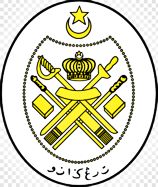

Sultan Omar Riayat Shah Ibni Almarhum Sultan Ahmad Muazzam Shah I aka, Baginda Omar, Sultan (سلطان) von Terengganu (ترڠڬانو), sendet eine Delegation unter Tunku Mahommed Ariffin nach London mit Geschenken für Königin Victoria. Ariffin trifft als Gesandter eines unabhängigen Staats Außenminister George William Frederick Villiers, 4th Earl of Clarendon (1800 - 1870) sowie den Prince of Wales, Albert Eduard von Sachsen-Coburg und Gotha (1841–1910), (Königin Victoria weilt gerade in Schottland).
Abb.: Lage von Terengganu (ترڠڬانو)
[Bildquelle: Constables Hand Atlas of India, 1893. -- Pl. 59]
Abb.: Prince of Wales Albert Eduard von Sachsen-Coburg und Gotha, ca. 1860
[Bildquelle. Wikimedia. -- Public domain]
1869
Abb.: Carte du royaume de Siam, de la Cochinchine française et du royaume de Cambodge... / par Victor-A. Malte-Brun <1816 - 1889>. -- 1869
1869
คุณพุ่ม = บุษบาท่าเรือจ้าง [Khun Phum] <1815 - 1880>: นิราศวังบางยี่ขัน [Nirat bang yikhan]
1869
Schaffung der deutschen „Ostasiatischen Schiffsstation“, damit dauernde deutsche Marinepräsenz in Ostasien. Zunächst nur Korvette SMS Medusa (1864).
"Geschichte Entstehung
Mit Beginn des 19. Jahrhunderts rückte der asiatisch-pazifische Raum in das Interesse europäischer und nordamerikanischer Mächte. Großbritannien erzwang in den Opiumkriegen von 1839 bis 1842 und 1856 bis 1860 eine weitgehende Öffnung Chinas für fremden Handel, und die USA erreichten 1854 in ähnlicher Weise die Öffnung Japans. Auch deutsche Reedereien beteiligten sich früh am Ostasienhandel. Schon ab Mitte des 18. Jahrhunderts hatten Schiffe der preußischen Emder Ostasiatischen Handelskompanie in der Region Seehandel betrieben. Der Besuch des Vollschiffs SMS Meteor der staatlichen Preußischen Seehandlung in der Region 1822 stellte den Beginn regelmäßiger Schifffahrtsverbindungen in der Zeit nach den Koalitionskriegen dar.
Es zeigte sich schnell, dass die ausländischen Kaufleute in China ohne militärische Unterstützung aus ihrer Heimat nur sehr schwer ihren Geschäften nachgehen konnten. Deutsche und vor allem Hamburgische Kaufleute waren auf die Hilfe anderer Marinen wie zum Beispiel der britischen Royal Navy angewiesen, da das nur lose im Deutschen Bund organisierte Deutschland keine eigene Marine besaß (Vgl. Geschichte der Deutschen Marine). Erst nach der Gründung einer preußischen Marine konnte man auf eigene Mittel zurückgreifen.
Im Jahre 1859 entsandte Preußen erstmals ein Geschwader von vier Schiffen unter Führung des Grafen Friedrich zu Eulenburg (1815 - 1881) nach Ostasien, um dort die militärische Unterstützung für den deutschen Handel zu unterstreichen und Handelsverträge abzuschließen. Am 2. September 1860 geriet das Geschwader vor Yokohama (横浜市) in einen Taifun, in dem der Schoner SMS Frauenlob mit seiner gesamten Besatzung von fünf Offizieren und 42 Mann sank.
Der Verband blieb bis 1861 in der Region. Zugleich begannen Bestrebungen, im ostasiatischen Raum einen eigenen Marinestützpunkt zu erwerben. Diese Bemühungen wurden erst 1897 mit der Besetzung Tsingtaos (青島) durch ein Expeditionskorps des Kreuzergeschwaders von Konteradmiral Otto von Diederichs (1843 - 1918) abgeschlossen.
Eine ständige deutsche Marinepräsenz in Ostasien wurde 1869 durch Schaffung der „Ostasiatischen Schiffsstation“ begründet, die zunächst nur mit einem Schiff, der Korvette SMS Medusa, besetzt wurde. Zu diesem Zeitpunkt war die preußische Marine bereits in der Marine des Norddeutschen Bundes aufgegangen, aus der 1871 nach der Reichsgründung die Kaiserliche Marine entstand. Die Station wurde zeitweise durch kleine Geschwader verstärkt, die die Region für bestimmte Aufträge besuchten, nach deren Erledigung aber wieder aufgelöst wurden. Rudolf Schering (1843 - 1901) war zweimal dienstältester Seeoffizier der Station.
Abb.: SMS Stosch / von Wilhelm Dressen (1840 - 1926), 1894
[Bildquelle: Wikipedia. -- Public domain]Am 1. April 1881 wurde die Gedeckte Korvette SMS Stosch in Dienst gestellt, um in Ostasien die Funktion als Flaggschiff der dort stationierten Kriegsschiffe zu übernehmen. Am 3. September 1881 waren die Schiffe des neu gebildeten Ostasiengeschwaders erstmalig in Tschifu [煙台市] vereint. Kommodore Louis von Blanc war von 1881 bis 1882 gleichzeitig Kommandant der Stosch und erster Chef des Geschwaders. Er wurde 1883 zum Konteradmiral befördert. Das Ostasiengeschwader wurde Anfang 1885 aufgelöst, nachdem die Stosch (inzwischen als Kreuzerfregatte klassifiziert) zur Aufstellung eines neuen Ostafrikanischen Kreuzergeschwaders nach Mauritius verlegt worden war.
Von 1886 bis 1893 stellte die Kaiserliche Marine ein permanentes Kreuzergeschwader auf, das in der Region zwischen der Ostküste Afrikas, Australien und der Westküste Südamerikas operierte. Dieses Geschwader sollte 1893 aus Kostengründen aufgegeben werden. Der chinesisch-japanische Krieg (1894) jedoch zwang alle Großmächte, ihre Einheiten in Ostasien aufzustocken. Daraufhin wurde der Auflösebefehl wieder geändert und eine Ostasiatische Kreuzerdivision gebildet. Nachdem am 1. November 1897 die beiden deutschen katholischen Missionare Franz Xaver Nies (1867 - 1897) und Richard Henle (1865 - 1897) der Steyler Mission in China ermordet worden waren, befahl Kaiser Wilhelm II., der einen Vorwand zur Errichtung eines deutschen Stützpunktes in China gesucht hatte, die Besetzung der Kiautschoubucht (膠州). Die Kreuzerdivision besetzte unter Konteradmiral Otto von Diederichs (1843 - 1818) mit SMS Kaiser, SMS Prinzess Wilhelm und SMS Cormoran am 14. November Stadt und Hafen von Tsingtau (青島). Die Schiffe setzten ein Landungskorps von 717 Mann unter dem Kommandanten der Kaiser, Kapitän zur See Hugo Zeye (1842 - 1909), an Land und verkündeten dem Befehlshaber der dort stationierten chinesischen Einheit ein Ultimatum, das ihn zum Abzug aufforderte. Am 17. November traf dann noch die SMS Arcona aus Shanghai und am 2. Dezember auch noch die SMS Irene aus Hongkong ein. Alle deutschen Kriegsschiffe waren damit vor Ort versammelt. Militärischen Widerstand hatte es nicht gegeben und die Deutschen hatten am 2. Dezember auch im 33 km entfernten Kiautschou die deutsche Fahne gehisst.
Da die deutsche Reichsregierung und das Reichsmarineamt erhebliche Schwierigkeiten in der Durchsetzung der Stützpunktfrage erwarteten, wurde noch 1897 aus der Heimat eine II. Kreuzerdivision unter dem Bruder des Kaisers, Prinz Heinrich von Preußen (1862 - 1929), entsandt. Im Mai 1898 wurden beide Kreuzerdivisionen zum Ostasiatischen Kreuzergeschwader vereint und von Diederichs zum Chef des neugebildeten Ostasiatischen Kreuzergeschwaders ernannt."
[Quelle: http://de.wikipedia.org/wiki/Ostasiengeschwader. -- Zugriff am 2013-10-10]
1869-01-03

Erster protestantischer Missionserfolg in Nordthailand: Taufe des ehemaligen buddhistischen Abts Nan Inta (1804 - 1882).
"Nan Inta (1804-1882) Nan Inta was the first baptized Christian convert in northern Thailand, baptized by the Rev. Daniel McGilvary of the Presbyterian Laos Mission. He taught northern Thai to the missionaries, wrote Christian tracts, and worked as an evangelistic assistant to the missionaries. He was the first ordained northern Thai elder. Nan Inta was born in 1804 in the Sarapee [Saraphi - สารภี] District of present-day Chiang Mai Province, studied for the Buddhist monkhood, and served as the abbot of a temple. He married Chunpeng.
When the McGilvarys, the first foreign missionaries to northern Thailand, arrived in 1867, Nan Inta began to visit them frequently and gained a knowledge of Christianity from them. He resisted conversion, however, until McGilvary correctly predicted a solar eclipse for 17 August 1868, which prediction convinced Nan Inta that traditional Buddhist cosmology was incorrect. He was baptized on 3 January 1869. In September 1869, Nan Inta fled from the persecution of Christians, which took place in Chiang Mai [เชียงใหม่] that month. In 1871, he resumed an active Christian life, and in 1873, the Siam Presbytery took him under care for preparation for ordained ministry. On 1 May 1875, First Church, Chiang Mai ordained him an elder, and the following year his wife and children converted to Christianity. In 1878 Nan Inta's daughter, Kham Tip, wanted to marry a young man training for the ministry, but influential relatives insisted the ceremony follow northern Thai animistic traditions. The Laos Mission appealed to the King of Thailand for redress, and the king's viceroy in Chiang Mai issued what was later called the "Edict of Religious Toleration" on 8 October 1878.
On 4 July 1880, the Laos Mission founded the Bethlehem Church in Sarapee District. Nan Inta's family and another family formed the core of this church with Nan Inta serving as the leader and first elder. In May 1882, he moved to the area of the Mae Dok Daeng [แม่ดอกแดง] Church, where he died on 27 August 1882. "
[Quelle: Dictionary of Thai Christianity. -- http://www.herbswanson.com/dictionary.php. -- Zugriff am 2013-10-05]
Abb.: Lage von Saraphi (สารภี)
[Bildquelle: OpenStreetMap. -- Creative Commons Lizenz (Namensnennung, share alike)]
1869-01-12 - 1872-02-08
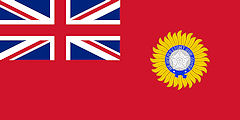
Richard Southwell Bourke, 6th Earl of Mayo (1822 - 1872) ist Governor-General and Viceroy of India
1869-02
Die neue dampfbetriebene Zuckerpresse in Nakhon Chaisi (นครชัยศรี = Nakhon Pathom - นครปฐม) ist in großen finanziellen Schwierigkeiten.
Abb.: Lage von Nakhon Chaisi (นครชัยศรี = Nakhon Pathom - นครปฐม)
[Bildquelle: OpenStreetMap. -- Creative Commons Lizenz (Namensnennung, share alike)]
1869-02-05


Die offizielle Zeitung von französisch Cochinchina, Le Courrier de Saigon:
"You wish then that this country might be Christian; once Christian it will be French. The instinct even of the Annamites alerts them to this mysterious correlation. . . . This country, moreover, is Christian." [Übersetzt in: Osborne, Milton E.: The French presence in Cochinchina and Cambodia : rule and response (1859-1905). -- Bangkok : white Lotus, 1997. -- 379 S. : Ill. ; 20 cm. -- ISBN 974-8434-00-1. -- "First published by Cornell Univ. in 1969". -- S. 42]
In ganz Cochinchina gibt es zu dieser Zeit weniger als 40.000 Katholiken
1869-03-04 - 1877-03-04

Ulysses S. Grant (1822 - 1885) ist Präsident der USA.
Abb.: Ulysses S. Grant: militärische Karriere, 1885
[Bildquelel: Wikipedia. -- Public domain]
1869-03-06

Brief von Rama V. an Anna Harriette Leonowens (1831 - 1915)
Abb.: Brief Rama's V.
[Bildquelle: Leonowens, Anna Harriette <1831 - 1915>: The English Governess at the Siamese Court: Being Recollections of Six Years in the Royal Palace at Bangkok. -- Philadelphia: Porter and Coates, 1870. -- 322 S. : Ill. -- Nach S. X]
1869-03-06
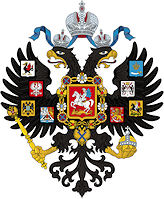
Der russische Chemiker Dmitri Iwanowitsch Mendelejew (Дмитрий Иванович Менделѣевъ, 1834 - 1907) stellt in St. Petersburg seine Entdeckung des periodischen Systems der Elemente vor.
Abb.: Das Periodensystem Mendelejew 1871
[Bildquelle: Wikipedia. -- Public domain]
1869-04-27 - 1869-05-19
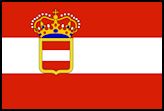
In Paknam (ปากน้ำ) ankert die österreichische Kriegsfregatte S. M.S. Donau. Sie kommt von Singapur und fährt weiter nach Saigon. Reisezweck: Handelspolitische Mission zusammen mit S.M.S. Erzherzog Friedrich.
Abb.: S.M.S. Donau
1869-04-28 - 1869-05-09

In Paknam (ปากน้ำ) ankert die österreichische Kriegskorvette S.M.S. Erzherzog Friedrich. Sie kommt von Singapur und fährt weiter nach Saigon. Reisezweck: Handelspolitische Mission zusammen mit S.M.S Donau.
Abb.: Schraubenkorvette S.M.S. Erzherzog Friedrich, 1868
[Bildquelle: Wikimedia. -- Public domain]
1869-05-04

Thomas Fitch Rowland (1831-1907) erhält das US-Patent für seinen “submarine drilling apparatus.” Es ist die erste dokumentierte Ölplattform. Sie wird nie verwirklicht, ist aber der Beginn der Unterwasserbohrungen nach Erdöl.
Abb.: Patentzeichnung
Abb.: Tiefseebohrungen im Golf von Thailand, 2012
[Bildquelle: http://www.offshoreenergytoday.com/meo-australia-drilling-continues-at-sainampueng-1-well-thailand/. -- Zugriff am 2013-08-25. -- Press release]
1869-05-10

Fertigstellung der Pacific Railroad nach San Francisco, der ersten transkontinentalen Eisenbahn der USA. Dadurch wird die USA für den transpazifischen Asienhandel erschlossen.
Abb.: First Pacific Railroad mit Anschlüssen in Omaha nach Osten
1869-05-17
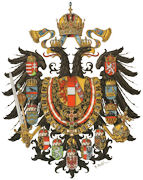
Unterzeichnung des Vertrags zwischen Siam und Österreich-Ungarn.
Abb.: Österreich-Ungarn (1869 noch ohne Bosnien und Herzegowina, damals türkisch)
[Bildquelle: D. H. Lange "Volksschul-Atlas", 1899]
Abb.: Leibgardist des Königs
1869-06

Bangkok: Die Chinesin Chiew lässt ihren US-Ehemann Captain John Smith ermorden. Smith, ein gewalttätiger Trunkenbold, hatte jahrelang seine Frau misshandelt. Obwohl sie sich beim US-Konsulat beschwerte, tat dieses nichts gegen den Ehemann. Die Mörder werden geköpft. Chiew wird zum Tode verurteilt, da sie aber schwanger ist, wird ihre Strafe dank Intervention der USA in drei Jahre Haft umgewandelt.
1869-09-01
Paul Lessler wird als Konsul des Norddeutschen Bundes in Siam akkreditiert.
Abb.: Wappen des Norddeutschen Bundes
[Bildquelle: TRAJAN 117, Ssolbergj / Wikipedia. -- GNU FDLicense]
Abb.: Norddeutscher Bund 1866 - 1871
[Bildquelle: kgberger / Wikipedia. -- GNU FDLicense]
"Under the provisions of the Bowring treaty and the analogous arrangements which were made by various European Powers other than Great Britain, a regular consular system had some time previously been set up in Siam. The formal intimation sent to the various Powers represented, of the king's accession, supplied an opportunity which was not missed of emphasising the existence of this system, by the tendering in dignified fashion of congratulations from the great monarchs of the West to the youth who had attained to royal power in Siam. It is a fact not without significance that the first to do this honour was the King of Prussia, the head of the North German Confederation, as the agglomeration of Germanic States was then known, who was represented at Bangkok at that time in the person of a very able official —Mr. P. Lessler. The circumstances under which the letter was delivered are of sufficient interest to justify the reproduction of this description of the episode which was published at the time in the local magazine :—
"September I, 1869, at 10.15 a.m., H.S.M.'s beautiful steam yacht, the Imperatrice, reached the N.G. Consulate. The decks were covered with soldiers, a Siamese band, some officers of rank, men bearing a double gold vase, seven- and five-sectioned umbrellas, and other insignia of royalty.
"The Siamese officers came up to the N.G. Consulate, announced the object of their mission, and received from the hands of the N.G. Consul the autograph letter of H.M. the King of Prussia. They carefully deposited it in the double vase of gold, surrounded it with the high seven- and five-sectioned umbrellas, and other insignia of royalty. One held over it a large white umbrella pointed with a gold spire sparkling with gems. The men bearing the seven- and five-sectioned umbrellas formed into line.
"The band of Siamese instruments struck up its music and the soldiers presented arms as the letter was borne to the cabin of the Imperatrice.
"P. Lessler, Esq., the N.G. Consul, Mr. A. Eisenblat, the Secretary, the Interpreter, and several N.G. gentlemen followed the letter to the steamer.
"When on board the gold vases containing the royal letter were carefully deposited in a prominent place. Then the N.G. flag was hoisted, and the Siamese officers politely requested the Consul and his company to be seated and to make themselves comfortable.
"The Imperatrice, which was decorated with flags, crowded with men in uniforms, alive and cheerful with music, steamed away to the landing: of the International Court House. When: the N.G. party landed they were politely received by the Chief Judge of the Court and; his suite, and as the royal letter was landed, the European and native instruments of music struck up their airs, the soldiers in array presenting arms.
"The Consul's company was then led to the handsomely decorated room of the Court, the royal letter was ceremoniously placed upon the centre table, tea and cigars were provided for the entertainment of the guests, and a line of cannon boomed welcome to the fraternal recognition of H.M. the King of Prussia twenty-one times.
" When all was in readiness the royal letter was placed upon a royal seat and was borne on men's shoulders, a large band of native and European instrumental music played cheerful marches and national airs, a long escort of soldiers headed the procession ; a line of umbrella-bearers, on each side, in front and in rear of the royal seat, then the Consul and his suite on sedans followed, and the procession moved first by the street running by the south wall of Wat Poh, then up the street by the east wall of Wat Poh and the east wall of the King's Palace, then up the street by the north wall of the palace, then up that street to the north gate of the inner wall of the palace, where the procession stopped. Both sides of the streets the entire length of the procession were thronged with eager spectators, and at short intervals on each side soldiers were stationed presenting arms to the letter as it passed.
"Having reached the inner gate the Consul and his suite dismounted from their sedans, and following the royal letter, walked through a file of infantry and band on each side of them to the waiting-hall, where his Excellency the ex-Kalahom but now 'Chow Phya Sri Suriwongse, head of the Senabodi,' received the company. . . . Just before entering the Audience Hall the letter was placed in the hands of the North German Consul. Having entered the Audience Hall and sighted H.M. the King of Siam, the Consul and his company bowed, advanced a few paces, bowed the second time, advanced a few paces and again bowed, and then the Consul advanced to a centre table in front of the throne and there deposited the gold vase containing the letter of his Most August Majesty the King of Prussia, and stepping backward to the red velvet cushion provided for him he stood silently and respectfully, while the Siamese court speaker, prostrate on all-fours, addressed H.S. Majesty, introducing the N.G. Consul and his company each by name, and stating the object of the present visit.
"The N.G. Consul then made a few appropriate remarks, stating that H.M. the King of Prussia had honoured him with the commission of presenting to H.S.M. a letter of condolence and congratulation in response to autograph letters which H.S.M. had previously sent through him to H.M. the King of Prussia. After this brief address Mr. P. Lessler stepped forward to the throne and handed the autograph letter to H.M. the King of Siam, then the N.G. Consul stepped back and he and his party sat as best they could on the carpeted floor. The Consul sat on a red velvet cushion. The high princes and nobles were prostrate throughout the entire ceremony. Before the Consul was placed a gold vase containing cigars and matches.
"After the company was seated H.M. the King of Siam said it afforded him great pleasure to receive the autograph letter of H.M. the King of Prussia, and particularly its kind expressions of sympathy and goodwill.
"Mr. P. Lessler replied he was grateful for the grand and honourable mode in which his Majesty had arranged for the reception of the royal autograph letter of H.M. the King of Prussia, and that he would not fail to mention to the Prussian Government the honours shown.
"His Majesty then recommended Mr. Lessler in his official capacity always to communicate with H.E. Chow Phya Bhanuwongse, the new Minister for Foreign Affairs. The Consul replied that he would gladly comply with His Majesty's directions. His Majesty then retired. The Consul and the new Kalahom and new Minister for Foreign Affairs met, conversed pleasantly, each evidently pleased with the events of the day. and then retired."
In connection with the presentation of these letters there was made a notable change in the method of the reception of the representatives of the European Powers. Up to that time attempts had been made to enforce upon all Europeans who had audience of the king the—to European minds—degrading form of showing respect practised by the native officials. In anticipation of the formalities attending the presentation of the letters the Consuls met and agreed upon the presentation from them of a joint demand that they should make their obeisance to the king in European fashion. The representation was well received, and from that time forward the right of consular representatives to show respect in the manner sanctioned by the usages of their own country was not contested."
[Quelle: Arnold Wright in: Twentieth century impressions of Siam : its history, people, commerce, industries, and resources / ed. in chief: Arnold Wright. -- London [etc.] : Lloyds, 1908. -- S. 67]
1869-09-13

Der französische Außenminister Henri Godefroi Bernard Alphonse de La Tour d'Auvergne-Lauraguais, prince pontifical de La Tour d'Auvergne (1823 - 1871) an den französischen Marine- und Kolonialminister Admiral Pierre-Louis-Charles Rigault de Genouilly (1807 – 1873)
Abb.: Henri Godefroi Bernard Alphonse de La Tour d'Auvergne-Lauraguais, prince pontifical de La Tour d'Auvergne
[Bildquelle: Wikimedia. -- Public domain]
'Ce gouvernement [Siam], Votre Excellence ne l'ignore pas, s'est montré prêt à pencher vers l'alliance d’une autre puissance limitrophe.1 C’est afin de combattre cette tendance que nous avons dû user avec lui de ces ménagements qu’on interprête mal à Saigon, où prédominent naturellement les préoccupations d'aggrandissement immédiat de la colonie. On ne semble pas assez reconnaître à Saigon que du moment où nous ne songeons pas à conquérir le Siam, une sage politique nous commande de nous faire un bon voisin de ce royaume interposé entre nous et les possessions anglaises. Le Siam croit son indépendance également menacée des deux côtés. Il importe de le rassurer en ce qui nous concerne, de l'attirer à nous par de bons procédés, et d'arriver à lui faire accepter une sorte de protectorat moral qui serait comme le prolongement du protectorat effectif que nous avons établi sur le Cambodge. Grâce à ce système applicable également aux autres états qui entourent notre colonie, celle-ci se trouverait couverte d'un réseau d'alliés dépendant d'elle à des degrés divers, se mouvant dans son orbite, et nous procurant tous les avantages de la souveraineté sans en donner les charges.' [Zitiert in: Tuck, Patrick J. N.: The French wolf and the Siamese lamb : the French threat to Siamese independence, 1858-1907. -- Bangkok : White Lotus, 1995. -- 434 S. : Ill. ; 22 cm. -- ISBN 974-8496-28-7. -- S. 340, Anm. 60]
1869-09-24

Schwarzer Freitag an der New Yorker Börse, verursacht durch zwei Gold-Spekulanten.
Abb.: "Photograph of the black board in the New York Gold Room, September 24, 1869, showing the collapse of the price of gold. Handwritten caption by James A. Garfield indicates it was used as evidence before the Committee of Banking & Currency during hearings in 1870. Caption and LOC note: "This is a Photograph of the Bulletin Board in the Gold Room at N.Y. Sept. 24, 1870 [i.e. 1869] the Black Friday of the Gold Panic - It was produced in Evidence before the Committee of Banking & Currency - J. A. Garfield Chair[...]of the Com[...]""
[Quelle: LoC / Wikipedia. -- Public domain]
1869-10-14
Siam Weekly Adviser über die Bunnag [บุนนาค] Familie
"Their great prominence.. .and their predominating control of the military, navy, munitions and other resources of the kingdom overawed all other members of the government so that even the semblance of opposition and resistance would be complete ruin to them and highly disastrous to the state." [Zitiert in: Battye, Noel Alfred <1935 - >: The military, government, and society in Siam, 1868-1910 : politics and military reform during the reign of King Chulalongkorn. -- 1974. -- 575 S. -- Diss., Cornell Univ. -- S. 95]
1869-11-07

Erste Straßenradrennen zwischen zwei Städten: Paris - Rouen (123 km). Der Sieger braucht 10 Stunden 25 Minuten.
Abb.: Die beiden Sieger des Rennens Paris - Rouen 1869
[Bildquelle: Wikimedia. -- Public domain]
1869-11-17
Feierliche Eröffnung des Sueskanals (Suez Canal) (قناة السويس). Dadurch müssen Schiffe auf der Asienroute nicht mehr um Afrika herumfahren und die Fahrzeit für Schiffe zwischen Europa und Asien wird um bis zu 24 Tage verkürzt. Der Suez -Kanal verhilft auch den Dampfschiffen zum Durchbruch gegenüber den Segelschiffen: Großbritannien errichtet eine Kette von Kohle-Stationen.
Dauer der Schifffahrt nach Singapur über den Suez-Kanal
- Thabor von Marseille (1. Schiff nach Singapur): 61 Tage
- Sin Zanzing aus Glasgow: 58 Tage
- Sakana von London: 58 Tage
- Shantung von Glasgow: 42 Tage
- Pei-Ho (1870-06) von Marseille: 29 Tage
Der Kanal wird anfangs wenig benutzt: 1870 benutzen ihn nur 486 Dampfer mit einer Durchschnittsgröße von 1000 BRT. 1956 sind es aber 14.600 Schiffe mit durchschnittlich 8000 BRT.
Abb.: Ostasien-Seeroute durch den Sueskanal (rot)
[Bildquelle: Bobamnertiopsis / Wikipedia. -- Creative Commons Lizenz (Namensnennung)]
Abb.: Suez Canal
[Bildquelle: Bartholomew, J. G. <1860 - 1920>: A literary & historical atlas of Asia. -- London, o. J.]
1869-11-18

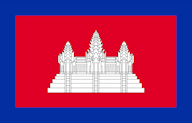
Brief von Marie Gustave Hector Ohier (1814–1870), Gouverneur von Saigon, an Paul Le Faucheur, französischer Kaufmann in Kambodscha:
"It is always painful to me, sir, to see some Frenchmen positioned at the forefront of civilization pass their time by denigrating each other through their unfavorable judgments. Their love for their motherland should allow them to bear with patience the small injuries of their vanity, given the immense interest there is for the country that we should stay united. Our divisions are detrimental to the objectives of our colonization and make the inhabitants of these lands laugh, to whom we claim to teach a superior civilization." [Übersetzung: Muller, Gregor [= Müller, Gregor] <1968 - >: Colonial Cambodia's 'bad Frenchmen' : the rise of French rule and the life of Thomas Caraman, 1840-87. -- London : Routledge, 2006. -- 294 S. : Ill. ; 23 cm. -- (Routledge studies in the modern history of Asia ; 37). -- ISBN 978-0-415-54553-2 . -- S. 104]
1869-11-22

Stapellauf des britischen Chinaklippers "Cutty Sark". Er ist für den Teehandel bestimmt und der einzige Teeklipper, der heute noch erhalten ist.
Abb.: Cutty Sark, o. J.
[Bildquelle: Wikimedia. -- Public domain]
1869-12-22
George Orde an Granville George Leveson-Gower, 2. Earl Granville (1815 - 1891), Secretary of State for the Colonies:
Abb.: Lage von Kědah [قدح] und Terengganu [ترڠڬانو]
[Bildquelle: Swettenham: British Malaya, 1907, Beilage]
"... With regard to the position of the Sultan of Trengganu [ترڠڬsنو] I have never heard it questioned but that he was, like the Rajah of Quedah [قدح] and other rulers of provinces on the Malayan Peninsula, a tributary of the King of Siam, and that as such it was not competent for him to enter into any direct negotiation with a foreign government. In the case of the exchange of territory with Quedah, the Siamese government sent its own Commissioners to this government to arrange the affair, and the Rajah of Quedah, although present, took no part in the proceedings and was not recognised in any way by the Commissioners. "I was not aware that the Sultan of Trengganu had sent an envoy to England and although the Maharajah of Johore [جوهور] informed me a few weeks since that there was a report in the Peninsula that he had done so, it seemed to me so unlikely that I did not attach any importance to the statement. When at Trengganu in August 1868 the Sultan let fall some remarks indicating his wish to visit or if that were impossible to send an embassy to the Queen but knowing that many of the native Princes, seeing the result which had ensued on the visit to England of the Maharajah of Johore, were anxious to follow his example and feeling that no possible benefit could accrue to him from such a step which moreover I felt it to be very unlikely the Siamese government would sanction I endeavoured to throw cold water on the idea and was under the impression that he had abandoned it.
"It is difficult to foretell what will be the effort of the Siamese government when it learns that one of its tributary Princes has sent an envoy to England without its knowledge but from the suspicious character of the people I am apprehensive that it may not be easy to persuade them that our government has not been accessory to the step and that it does not conceal something adverse to Siamese interests.
"What at Siam in August 1868, I mentioned to the late King my attention of visiting Trengganu on my return and the next day the Kalahome [กลาโหม] (then Prime Minister of the Kingdom, but now Regent) pressed me much as to the object of my visit and seemed hardly satisfied with my assurance that it was purely of a complimentary nature with the object of making the Sultan's acquaintance and establishing friendly relations with him and that I should not enter into any political matter with His Highness.
"I am also under the impression that at this time either the Kalahome or some other person, possibly an officer of the Consulate told me that the Sultan of Trengganu had been talking of sending an envoy to England and that it was looked upon with disfavour being supposed to evidence a desire to obtain our assistance in emancipating himself from the domination of Siam
"... I thought it right to send a hurried note to Mr. Knox [Konsul Thomas George Knox, 1824 - 1887] stating what had taken place and suggesting to him that if the Siamese government should appear dissatisfied with or disquieted at what had happened, it would probably be better that I should send the two letters of the Queen and Prince of Wales in reply to those of the Sultan to Mr. Knox to be by him handed to the Siamese government for transmission to the Sultan in place of sending them direct to the Sultan myself as directed by Your Lordship.
"... I deem it right to add that the envoy selected by the Sultan is said to be the son of a native Rajah on the Sumatran coast -I have always understood a person of no rank or position. Being a clever pushing young man he has been usually selected by the Sultan to bring messages and complimentary letters to Singapore with presents of fruits and specimens of the Sultan's skill as a career of which he is very proud. On these occasions it is customary for the local government to support the messages and the crews of the large boats which they come during their stay in Singapore, and the last time but one that this young man came to the settlement I found that he was making his stay longer than was necessary being evidently more anxious to enjoy the amusement of the place than to carry out his duties and I caused him to be told that he had better return to Trengganu, however before he could do this he was arrested for debt, some money he had borrowed for his own personal use of a native countryman and I was obliged to repay it to obtain his liberation.
"In the course of a few months he came hack again on some pretext or other and feeling satisfied that he was making a tool of the Sultan and using his name for his own purposes I refused to see him or held any communication with him and told him he must return to his country at once. He however followed me up to Penang and was with difficulty got rid of... "
[Zitiert in: Manich Jumsai [มานิจ ชุมสาย] <1908 - 2009>: History of Anglo-Thai relations. -- 6. ed. -- Bangkok : Chalermnit, 2000. -- 494 S. : Ill. ; 21 cm. -- S. 234 - 237]
ausführlich: http://www.payer.de/thailandchronik/ressourcen.htm
Phongpaichit, Pasuk <ผาสุก พงษ์ไพจิตร, 1946 - > ; Baker, Chris <1948 - >: Thailand : economy and politics. -- Selangor : Oxford Univ. Pr., 1995. -- 449 S. ; 23 cm. -- ISBN 983-56-0024-4. -- Beste Geschichte des modernen Thailand.
Ingram, James C.: Economic change in Thailand 1850 - 1870. -- Stanford : Stanford Univ. Pr., 1971. -- 352 S. ; 23 cm. -- "A new edition of Economic change in Thailand since 1850 with two new chapters on developments since 1950". -- Grundlegend.
Akira, Suehiro [末廣昭] <1951 - >: Capital accumulation in Thailand 1855 - 1985. -- Tokyo : Centre for East Asian Cultural Studies, ©1989. -- 427 S. ; 23 cm. -- ISBN 4896561058. -- Grundlegend.
Skinner, William <1925 - 2008>: Chinese society in Thailand : an analytical history. -- Ithaca, NY : Cornell Univ. Press, 1957. -- 459 S. ; 24 cm. -- Grundlegend.
Mitchell, B. R. (Brian R.): International historical statistics : Africa and Asia. -- London : Macmillan, 1982. -- 761 S. ; 28 cm. -- ISBN 0-333-3163-0
Smyth, H. Warington (Herbert Warington) <1867-1943>: Five years in Siam : from 1891 to 1896. -- London : Murray, 1898. -- 2 Bde. : Ill ; cm.
ศกดา ศิริพันธุ์ = Sakda Siripant: พระบาทสมเด็จพระจุลจอมเกล้าเจ้าอยู่หัว พระบิดาแห่งการถ่ายภาพไทย = H.M. King Chulalongkorn : the father of Thai photography. -- กรุงเทพๆ : ด่านสุทธา, 2555 = 2012. -- 354 S. : Ill. ; 30 cm. -- ISBN 978-616-305-569-9
Lavery, Brian: Schiffe : 5000 Jahre Seefahrt. -- London [u. a.] : DK, 2005. -- S. 184. -- Originaltitel: Ship : 5000 years of marine adventure (2004)
Donko, Wilhelm M. <1960 - >: Auf den Spuren von Österreichs Marine in Siam (Thailand). -- Berlin : epubli, 2012. -- 540 S. : Ill. ; 22 cm. -- ISBN 978-3-8442-2504-4